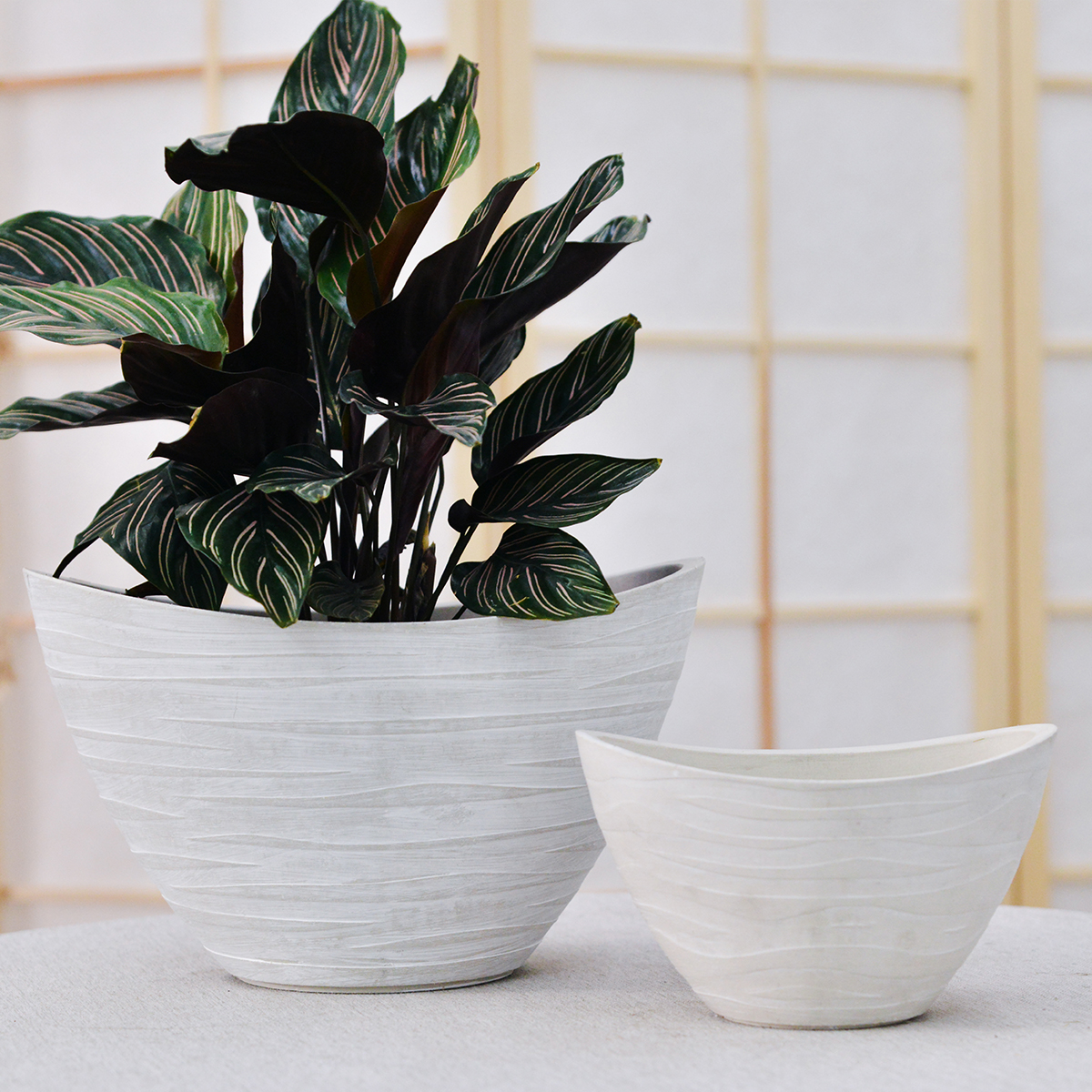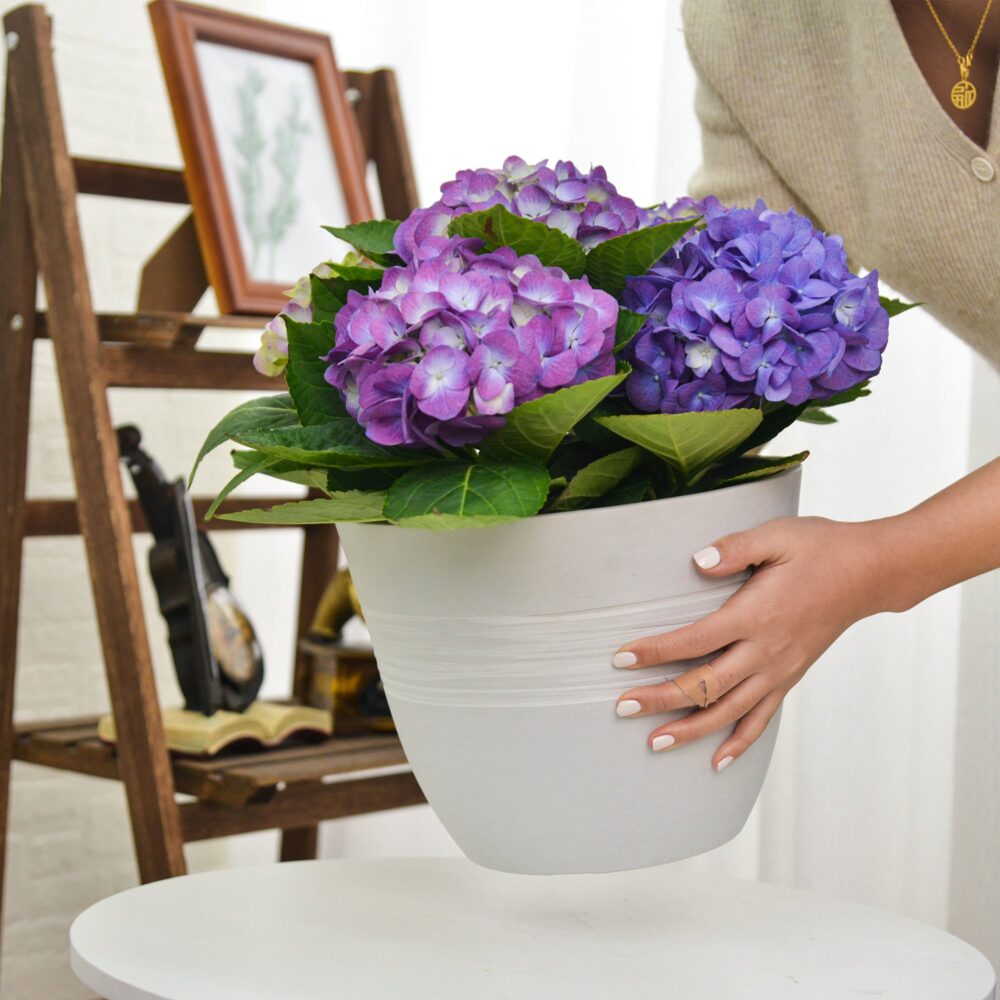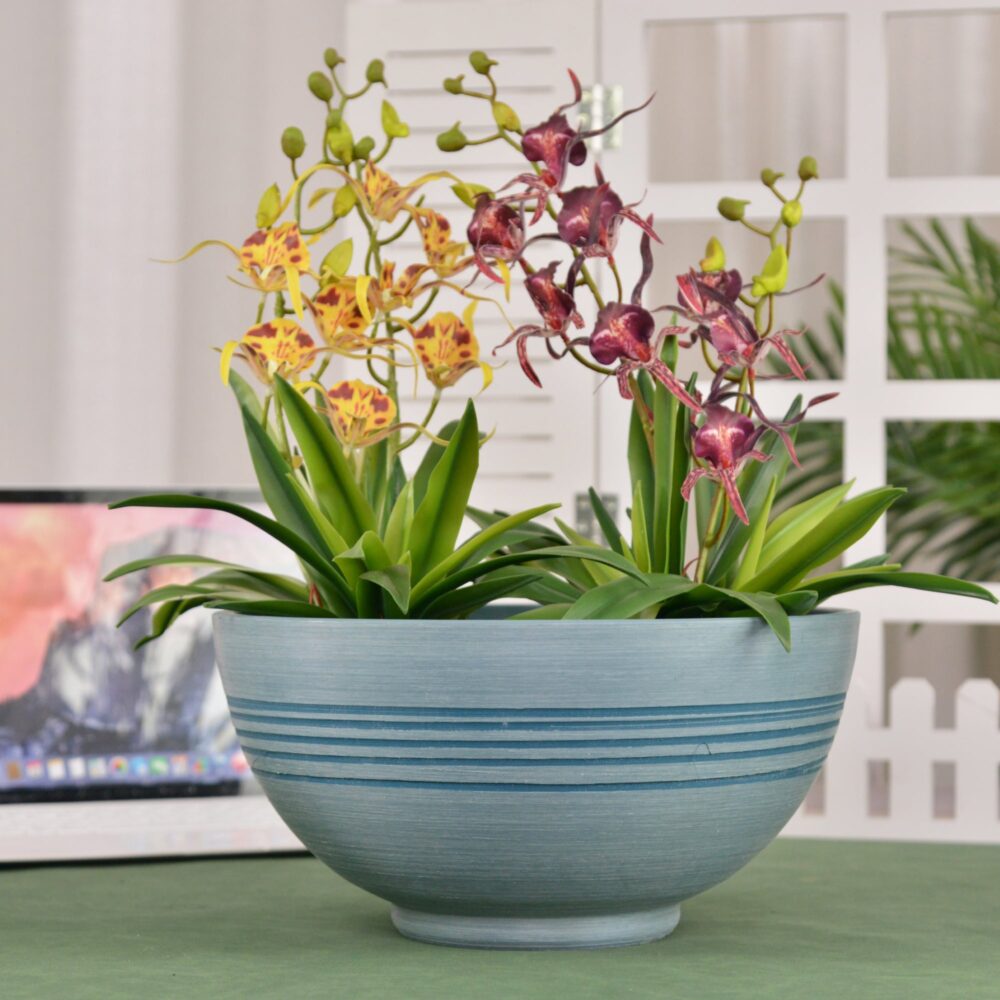Osteospermum in Pots: The Complete Guide to Growing African Daisies Outdoors in Containers
Want to brighten your patio, balcony, or garden with cheerful, daisy-like blooms and long-lasting color? Osteospermum, commonly known as African Daisy or Cape Daisy, are wonderfully vibrant and rewarding choices for outdoor container gardening. Celebrated for their profusion of colorful, daisy-like flowers, their wide array of hues from whites and yellows to oranges, pinks, purples, and bi-colors, their long blooming season, and their relative ease of care, Osteospermum are perfect for adding sunshine and continuous beauty to sunny outdoor spaces. This comprehensive guide will provide you with everything you need to know to grow Osteospermum successfully in outdoor pots, from selecting the best varieties and containers to mastering essential care techniques for a season filled with African Daisy blooms and sunny charm.
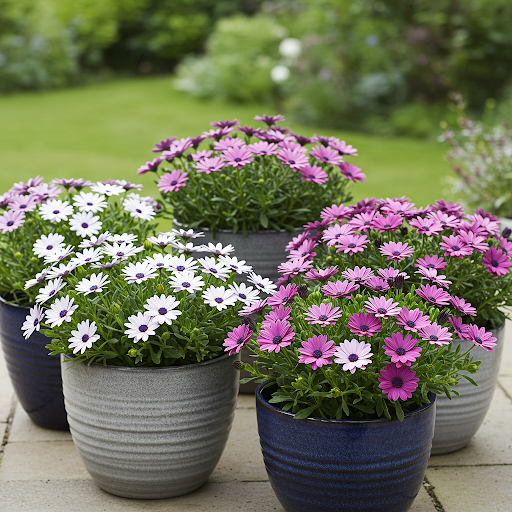
Osteospermum
What are Osteospermum (African Daisies)?
Osteospermum, commonly called African Daisy or Cape Daisy, is a genus of flowering plants in the Asteraceae family (daisy family). Native to Africa, particularly South Africa, Osteospermum are popular annuals and tender perennials(depending on the climate) grown for their brightly colored, daisy-like flowers and long blooming season. Osteospermum flowers are famous for their classic daisy form and vibrant, cheerful colors. They come in a wide array of colors, including white, cream, yellow, gold, orange, salmon, pink, magenta, purple, and bi-colors, often with contrasting centers or petal reverses. Osteospermum plants are characterized by their bushy, often mounding growth habit, dark green, often lobed or spoon-shaped leaves, and sturdy stems. They exhibit a mounding to spreading growth habit, ranging in height from under 1 foot to over 3 feet tall, depending on the species, cultivar, and pruning. They are known for their prolific blooming, wide color range, classic daisy shape, long blooming season (spring to fall, and even year-round in mild climates), sun-loving nature, and relative ease of care, making them an invaluable addition to gardens and containers, especially for adding continuous color and pollinator appeal.
Are Osteospermum Good for Outdoor Pots?
Yes, Osteospermum are exceptionally well-suited for outdoor pots and container gardening, especially compact and medium-sized varieties. Their bushy, mounding growth habit, exceptionally long blooming season, tolerance of sunny locations and heat, and cheerful, daisy-like flowers make them ideal for filling pots, patio containers, window boxes, and mixed container arrangements for sunny locations. Osteospermum thrive in full sun and bloom profusely from spring until frost, and even longer in mild climates, providing an incredibly long-lasting and delightful display in containers. Their relatively easy-care nature and continuous blooms make them a fantastic and rewarding choice for container gardens of all styles, especially for adding a classic, cottage garden, or Mediterranean touch to patios, balconies, and decks. Growing Osteospermum in pots also allows you to easily move them to optimal locations to enjoy their beauty, to follow the sun, and to protect them from frost in cooler climates, extending their bloom season.
Ideal Growing Conditions for Osteospermum in Pots:
Types of Osteospermum for Pots: Many Osteospermum varieties and series are excellent for pots, but consider your desired size, flower color, and growth habit when choosing:
- Compact Osteospermum: (Under 1 foot tall) – Compact and smaller in stature, ideal for small to medium pots, window boxes, edging, and foreground plantings. Known for their tight, mounding habit and profusion of blooms on shorter stems. Excellent for smaller containers and tighter spaces. Look for series like ‘ Soprano Series’, ‘ Zion Series’, ‘ Gelato Series’, ‘ FlowerPower Compact Series’, and ‘ Cape Daisy Petite Series’.
- Medium-Sized Osteospermum: (1-2 feet tall) – Bushy and more upright than dwarf types, but still relatively compact, suitable for medium to large pots, patio containers, and mixed arrangements. Offer larger flowers and a wider range of colors in a manageable size for pots. Look for series like ‘ FlowerPower Series’ (standard types), ‘ 3D Series’, ‘ Purple Sun’, ‘ Serenity Series’, ‘ Astra Series’, and ‘ Sunny Series’.
- Trailing/Spreading Osteospermum: Some Osteospermum varieties have a more trailing or spreading habit, making them suitable for larger pots, hanging baskets, and spilling over container edges. Look for series or cultivars described as “trailing” or “spreading,” such as ‘ Trailing White’, ‘ Trailing Purple’, ‘ Avalanche’, and some selections within the ‘ Cape Daisy’ series.
- Double-Flowered Osteospermum: Double-flowered Osteospermum varieties have fuller, more petal-packed blooms, adding extra texture and visual interest. They often have a slightly more mounding habit. Look for series like ‘ Double Time Series’, ‘ Capetown Series’, ‘ FlowerPower Double Series’, and individual double cultivars.
- Spoon-Petaled Osteospermum: Some Osteospermum have unique “spoon” or “quilled” petals, adding textural interest. Look for varieties with “spoon” or “quilled” in the name, or series like ‘ Invasion Series’ (some selections), and ‘ Spider White’.
- Color Themes (for Pots): Choose varieties based on your desired color palette for your container garden. Osteospermum offer a wide and cheerful color range.
- Whites & Creams: ‘ Soprano White’, ‘ Zion White’, ‘ Serenity White’, ‘ Cape Daisy White’, ‘ Spider White’, ‘ Snowdrift’.
- Yellows & Golds: ‘ Soprano Yellow’, ‘ Zion Yellow’, ‘ Sunny Philip’, ‘ FlowerPower Yellow’, ‘ Cape Daisy Gold’, ‘ Lemon Twist’.
- Oranges & Corals: ‘ Soprano Orange’, ‘ Zion Orange’, ‘ Sunny Sonja’, ‘ FlowerPower Orange’, ‘ Cape Daisy Copper’, ‘ Apricot Daisy’.
- Pinks & Magentas: ‘ Soprano Pink’, ‘ Zion Pink’, ‘ Serenity Rose’, ‘ FlowerPower Pink’, ‘ Cape Daisy Pink’, ‘ Magenta Magic’.
- Purples & Lavenders: ‘ Soprano Purple’, ‘ Zion Purple’, ‘ Purple Sun’, ‘ FlowerPower Purple’, ‘ Cape Daisy Lavender’, ‘ Violet Eyes’.
- Bi-colors & Patterns: ‘ 3D Blueberry’, ‘ FlowerPower SpiderWhite’, ‘ Cape Daisy Celebration’, ‘ Sunset Shades’, ‘ Passion Mix’, ‘ Harlequin Mix’.
Light: Osteospermum thrive in full sun. They need at least 6-8 hours of direct sunlight per day to bloom profusely and develop their best, most vibrant colors. Choose a sunny location for your Osteospermum containers, such as a south-facing patio, balcony, or garden bed. In partial shade, Osteospermum will produce fewer blooms, become leggy, and their flower colors may be less intense. Full sun is essential for optimal flowering, vibrant colors, and compact, floriferous growth. In very hot summer climates, they may appreciate some light afternoon shade to prevent heat stress, but generally prefer full sun.
Soil: Osteospermum need well-draining soil that is moderately fertile and slightly acidic to neutral. They are susceptible to root rot in soggy conditions. Use a high-quality potting mix specifically formulated for containers or flowers. Amend potting mix with perlite, vermiculite, or horticultural grit to improve drainage and aeration, which is crucial for Osteospermum. Avoid heavy, compacted soil or garden soil in pots, as they can become waterlogged. A slightly acidic to neutral pH (around 6.0-7.0) is ideal for Osteospermum.
Watering: Osteospermum prefer consistently moist soil, but they also need excellent drainage and dislike being waterlogged. Water thoroughly when the top inch of soil feels slightly dry. Water deeply until water drains out of the drainage holes. Allow the soil surface to dry out slightly between waterings, but do not let the soil dry out completely, especially during hot weather or when plants are in full bloom. Avoid overwatering and constantly soggy soil, which can lead to root rot. Osteospermum prefer a “moist but not soggy” soil environment. Watering frequency will depend on weather conditions, light levels, pot size, and plant size. During hot summer months, you may need to water more frequently, especially for smaller pots in full sun or windy locations. Check soil moisture regularly and adjust watering accordingly. Reduce watering slightly in fall as temperatures cool and day length shortens. Water at the base of the plant or use overhead watering early in the day to allow foliage to dry before evening, which can help prevent fungal diseases.
Temperature: Osteospermum are cool-season bloomers that thrive in mild temperatures. They perform best in temperatures between 60°F to 75°F (15°C to 24°C). They bloom most prolifically in spring and fall when temperatures are cooler. Hot summer temperatures (above 85°F/29°C) can cause them to slow down or temporarily stop blooming, especially in hot summer climates. In mild summer areas, they will bloom continuously through summer. Osteospermum are frost-tolerant to light frost, but are not hardy to hard freezes. In USDA zones 9-11, Osteospermum can be tender perennials, often blooming year-round in mild coastal areas. In colder zones, they are typically grown as annuals. Potted Osteospermum are easy to move to optimal locations to enjoy their beauty and extend their bloom season. In hot summer areas, provide some light afternoon shade during the hottest part of the day to prolong blooming.
Fertilizer: Osteospermum are moderate feeders and benefit from regular fertilization to support their long blooming season and healthy growth. Consistent fertilization encourages continuous flowering. Fertilize regularly during the growing season (spring to fall) with a balanced liquid fertilizer (e.g., 10-10-10 or 20-20-20) diluted to half strength, every 2-4 weeks, or according to product label instructions. For containers, more frequent feeding (e.g., every 3 weeks) may be beneficial due to leaching from watering. Alternatively, you can use a slow-release granular fertilizer incorporated into the potting mix at planting time, but supplement with liquid feed throughout the season, especially for heavy bloomers. Choose a fertilizer formulated for flowering plants, or a balanced fertilizer. Regular, consistent feeding is beneficial for Osteospermum to fuel their continuous blooming.
Choosing the Right Pots for Osteospermum:
Suitable Pot Types: Osteospermum are adaptable to various pot types, including terracotta, ceramic, plastic, resin, and decorative containers. Consider these factors when selecting pot types for Osteospermum:
- Terracotta Pots: Porous, allow good aeration and drainage, and aesthetically classic and warm-toned, complementing Osteospermum’s daisy-like charm. Terracotta is a good choice for Osteospermum as it provides good drainage and a classic look. However, terracotta pots also dry out more quickly, which may require more frequent watering, especially in sunny, warm locations. Monitor soil moisture closely.
- Glazed Ceramic Pots: Available in many decorative styles, can add a decorative element to your container garden, and retain moisture reasonably well. Ensure good drainage. Choose based on your desired aesthetic and moisture retention needs. Glazed ceramic pots retain moisture better than unglazed terracotta, which can be beneficial for Osteospermum, but ensure drainage is still adequate.
- Plastic Pots: Lightweight, inexpensive, retain moisture well, and are available in various colors and styles. Excellent choice for Osteospermum, especially for moisture retention and for larger pots that need to be moved. Choose good quality plastic pots with drainage holes. Plastic pots help retain moisture, which can be beneficial, especially in sunny locations and for busy gardeners.
- Resin Pots: Lightweight, durable, available in various styles mimicking terracotta or ceramic, and offer a balance of drainage and moisture retention. A good alternative to heavy ceramic pots, and often more durable than terracotta or plastic. Resin pots also retain moisture well, similar to plastic.
- Window Boxes & Long Planters: Compact and medium-sized Osteospermum varieties look beautiful massed in window boxes and long planters, creating a vibrant and colorful display. Ensure good drainage and adequate spacing between plants.
- Colorful Pots: Boldly colored pots can enhance the cheerful colors of Osteospermum blooms. Choose pot colors that complement or contrast with your chosen Osteospermum varieties for a striking visual effect. Pastel pots can also create a softer, more romantic look.
Drainage: Excellent drainage is essential for Osteospermum to prevent root rot. They are susceptible to root rot in soggy conditions. Ensure your chosen pot has drainage holes at the bottom. Avoid pots without drainage holes. Adding a generous layer of perlite or pot shards at the base of the pot is highly recommended to further improve drainage, especially in heavier pots or if you tend to overwater. Elevating pots slightly on pot feet or bricks can further improve drainage and air circulation around the base.
Pot Size: Choose pot sizes appropriate for the type and mature size of the Osteospermum you are planting, and the desired visual impact. Osteospermum have moderately sized root systems and need adequate space for healthy growth and flowering.
- Compact Osteospermum: For compact Osteospermum, pots that are 6-10 inches in diameter and at least 6-8 inches deep are suitable for individual plants. For mass plantings or window boxes, use larger containers or window boxes with spacing of about 8-12 inches between plants.
- Medium-Sized Osteospermum: For medium-sized Osteospermum varieties, use pots that are 10-14 inches in diameter or larger and at least 8-10 inches deep for individual plants, or larger patio containers for multiple plants or mixed arrangements. Medium-sized Osteospermum need more root space and stability.
- Larger Osteospermum (e.g., shrubby types): For larger, more shrubby Osteospermum varieties (less common in containers), use pots that are 14 inches in diameter or larger and at least 12 inches deep to accommodate their larger root systems and top growth.
Color and Style: Choose pot colors and styles that complement your Osteospermum blooms and your outdoor décor, and enhance their cheerful, daisy-like charm. Brightly colored pots can enhance the vibrant colors of Osteospermum blooms. White, cream, or pastel pots can create a more classic, elegant look, allowing the flower colors to pop. Terra cotta or natural-look pots can provide a more earthy, garden-style feel. Classic, simple pot styles often best showcase the beauty of Osteospermum flowers. Consider the overall style of your patio or garden and choose pots that harmonize with the surroundings, and enhance the bright, colorful, and cheerful ambiance you wish to create.
Essential Care Tips for Thriving Osteospermum in Outdoor Pots:
- Watering: “Keep Soil Consistently Moist, Allow Surface to Dry Slightly, Avoid Soggy Soil”. Water thoroughly and regularly to maintain consistently moist soil, especially during warm weather and active blooming. Water deeply when the top inch of soil feels slightly dry. Allow the soil surface to dry slightly between waterings. Avoid overwatering and constantly soggy soil. Consistent moisture is key, but drainage is equally important.
- Sunlight: Provide Full Sun (6-8+ Hours Daily). Place Osteospermum pots in a location that receives full sun for optimal growth, blooming, and vibrant colors. In very hot summer climates, light afternoon shade may be beneficial.
- Fertilizing: Fertilize Regularly, Every 2-4 Weeks During Growing Season. Fertilize every 2-4 weeks with a dilute balanced liquid fertilizer, or use slow-release fertilizer supplemented with liquid feed. Regular, consistent feeding is beneficial for prolific blooming.
- Deadheading (Encourage Continuous Bloom & Tidiness): Deadhead spent flower heads regularly to encourage continuous blooming and maintain a tidy appearance. Pinch or snip off faded flowers below the flower head. Regular deadheading encourages more flower production throughout the season.
- Pinching/Pruning (Optional, for Bushiness and Shape): Pinch back young Osteospermum seedlings when they are young to encourage bushier growth. Lightly prune or trim back plants mid-season if they become leggy or straggly, or to maintain a desired shape. Pruning encourages new growth and more blooms.
- Overwintering (In Mild Climates, Tender Perennial): In USDA zones 9-11, Osteospermum may overwinter as tender perennials, especially if protected from frost and excessive winter moisture. In colder zones, they are annuals and are typically replanted each spring. In marginal zones, you can try to overwinter potted Osteospermum by bringing them indoors to a cool, bright, frost-free location before frost, reducing watering, and then returning them outdoors in spring after frost danger has passed. Cut back plants by about 1/3 before overwintering.
- Pest and Disease Control: Osteospermum are generally relatively pest and disease-resistant, but monitor for occasional pests like aphids, spider mites, and whiteflies, especially in hot, dry conditions. Fungal diseases like root rot can occur if soil is kept too soggy or drainage is poor. Ensure good air circulation by spacing plants adequately, avoid overcrowding, provide excellent drainage, and avoid overwatering. Treat any pest or disease issues promptly with insecticidal soap, horticultural oil, neem oil, or appropriate fungicides if necessary.
Popular Osteospermum Cultivars for Pots (by Series/Color/Flower Type):
- Soprano Series (Ball FloraPlant): Compact habit, early blooming, wide color range, good for small pots. ‘Soprano White’, ‘Soprano Yellow’, ‘Soprano Orange’, ‘Soprano Pink’, ‘Soprano Purple’, and various colors.
- Zion Series (PlantHaven): Compact to medium habit, vibrant colors, heat tolerant, good for pots and mixed containers. ‘Zion Purple Sun’, ‘Zion Yellow’, ‘Zion Orange’, ‘Zion White’, ‘Zion Pink’, and more.
- FlowerPower Series (Selecta One): Medium habit, large flowers, wide color range, reliable blooming. ‘FlowerPower Yellow’, ‘FlowerPower Orange’, ‘FlowerPower Pink’, ‘FlowerPower Purple’, ‘FlowerPower White’, ‘FlowerPower Double White’, ‘FlowerPower SpiderWhite’, and many others.
- 3D Series (Selecta One): Unique “3D” double flowers with raised centers, medium habit, distinctive blooms. ‘3D Blueberry’, ‘3D Violet’, ‘3D Yellow’, ‘3D Cranberry’, and other 3D colors.
- Cape Daisy Series (Dümmen Orange): Wide range of types from compact to trailing, various flower forms and colors, reliable and versatile. ‘Cape Daisy White’, ‘Cape Daisy Yellow’, ‘Cape Daisy Pink’, ‘Cape Daisy Copper’, ‘Cape Daisy Celebration’, ‘Cape Daisy Petite White’, ‘Cape Daisy Trailing White’, and many more.
- Gelato Series (Danziger): Very compact, dwarf habit, early blooming, tight mounds, ideal for small pots and edging. ‘Gelato White’, ‘Gelato Yellow’, ‘Gelato Rose’, ‘Gelato Violet’, and other Gelato colors.
- Sunny Series (Selecta One): Medium habit, vibrant, sunny colors, reliable and cheerful. ‘Sunny Philip’, ‘Sunny Sonja’, ‘Sunny Mary’, ‘Sunny Ingrid’, and other Sunny varieties.
- Serenity Series (Ball FloraPlant): Medium habit, classic daisy form, good color range, reliable and versatile. ‘Serenity White’, ‘Serenity Rose’, ‘Serenity Purple’, ‘Serenity Dark Purple’, and other Serenity colors.
In Summary:
Growing Osteospermum (African Daisies) in outdoor pots is a wonderfully rewarding way to brighten your patios, balconies, and gardens with cheerful, daisy-like blooms and long-lasting color from spring until fall, and even longer in mild climates. Their prolific flowering, wide color range, classic daisy shape, and relatively easy care make them a perfect choice for container gardeners seeking continuous color and sunny charm. By providing full sun, well-draining potting mix in pots with excellent drainage, consistent moisture but avoiding soggy soil, regular fertilizing during the growing season, deadheading spent flowers, and choosing pot sizes and styles that complement their daisy-like beauty, you can easily cultivate thriving Osteospermum plants in pots and enjoy their captivating, colorful displays for many months each year.
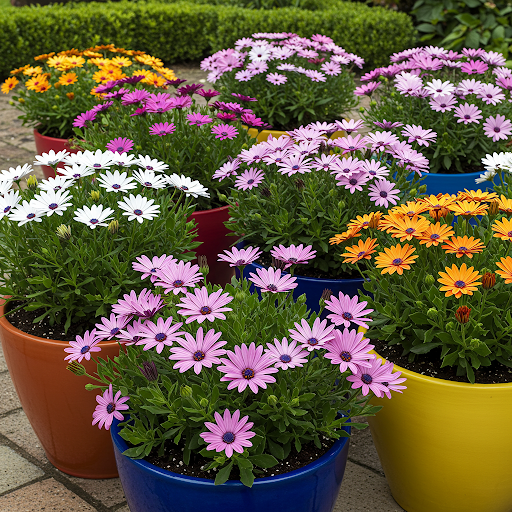
Osteospermum
For more detailed botanical information and to explore the diverse world of Osteospermum, you can visit the Wikipedia page on Osteospermum.
Important Note: Osteospermum plants are generally considered non-toxic to humans and pets, making them a safe and attractive choice for households with children and animals. The primary care benefits of Osteospermum in pots are their exceptionally long blooming season, cheerful and abundant daisy-like flowers, wide and vibrant color range, and relatively easy care, bringing enduring sunshine and delightful beauty to your outdoor spaces for many months. With these simple care practices, you can enjoy a season filled with the abundant charm of Osteospermum in your outdoor containers.
20YB
By greenship|2024-08-16T05:37:57+00:00August 16, 2024|Categories: Hand-carving Series|
Planter for Indoor Outdoor Plants, Set of 2 Modern Decorative Plant Pots with Drainage Hole, Decorative Flower Pots
By greenship-seo|2025-01-14T12:26:44+00:00January 14, 2025|Categories: Hand-carving Series|Tags: Decorative Flower Pots|
Planter 6 in W / 8 in W / 12 in W Indoor or Outdoor Plants, Modern Decorative Plant Pots with Drainage Hole, Decorative Flower Pots
By greenship-seo|2025-02-06T13:43:53+00:00January 16, 2025|Categories: Hand-carving Series|Tags: Decorative Flower Pots|
20VD
By greenship|2024-08-13T06:43:41+00:00August 13, 2024|Categories: Hand-carving Series|
13 inch Planter for Indoor Plants, Set of 2 Modern Decorative Plant Pots with Drainage Hole, Cute Bowl Shape Flower Pots
By greenship-seo|2025-04-10T07:41:46+00:00January 10, 2025|Categories: Hand-carving Series|Tags: Decorative Flower Pots, Self-Watering Pots|
11V
By greenship|2024-08-13T03:05:48+00:00August 13, 2024|Categories: Hand-carving Series|

